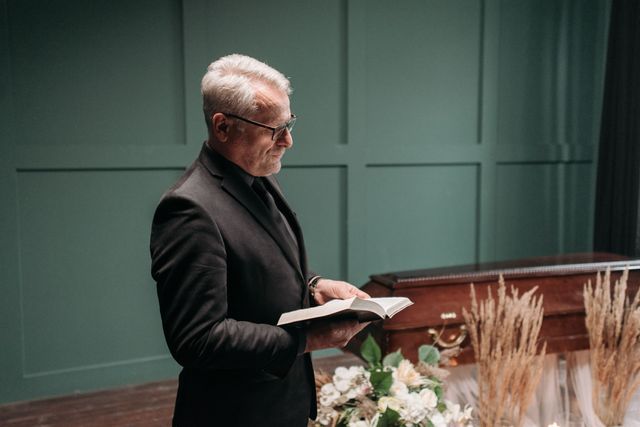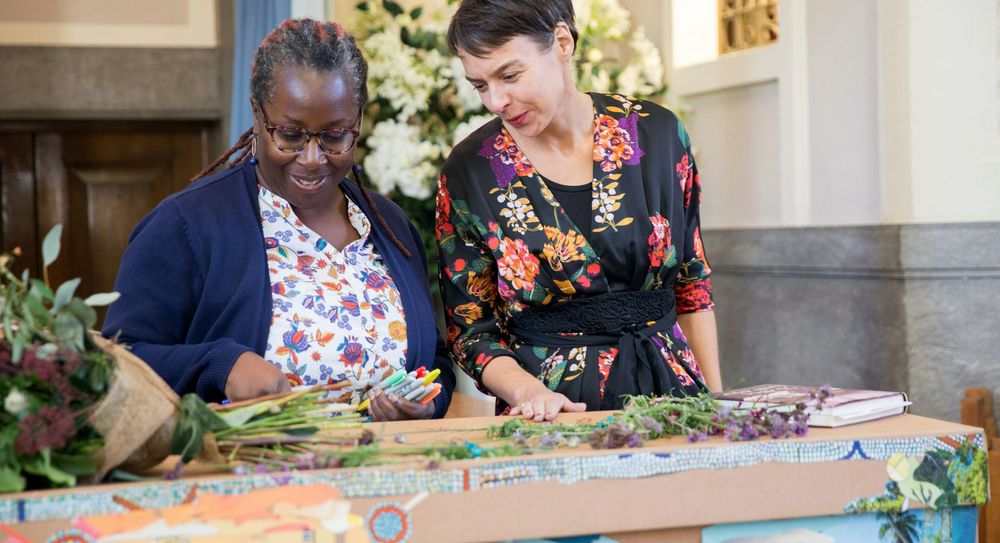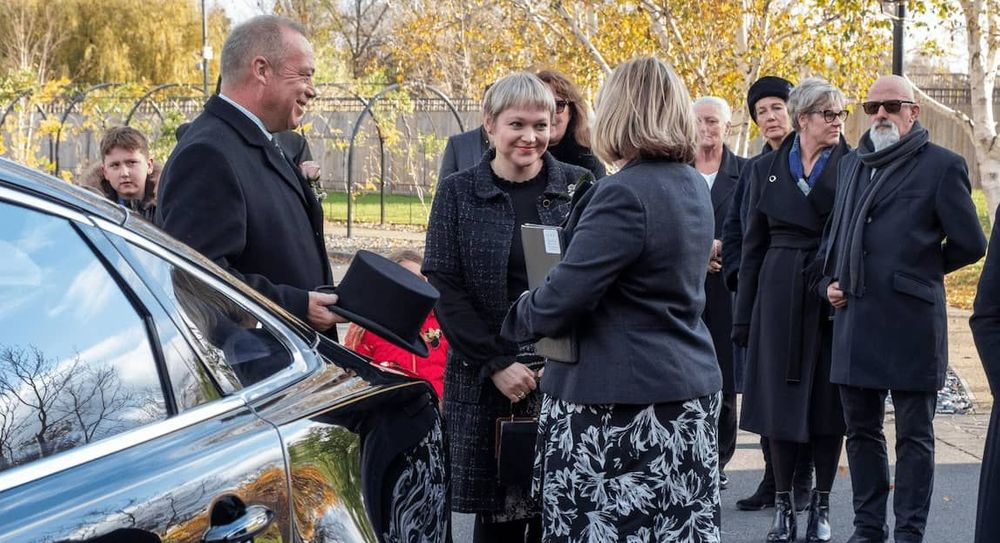If you’re arranging a funeral, you might be wondering who’s the best person to lead the service? You might wish to go the traditional route and have a faith leader or celebrant lead the service. But if that doesn’t feel right, there are other options. Here you can find everything you need to know about how to lead a funeral service. From deciding whether it’s the right decision for you to a list of tasks to complete before and during the service itself.
Who usually leads a funeral service?
Most funerals are led by a celebrant or a religious leader, who’ll usually meet with friends or family of the person who’s passed before the funeral. This gives them a chance to get to know a bit about the person who’s passed and discuss what everyone’s expecting from the funeral.
During the funeral, the celebrant will usually stand at the front of the space, often on a raised platform with some sort of microphone, so everyone can see and hear them. They’ll guide the funeral according to the order of service.
This generally involves:
- Welcoming people to the funeral
- Talking about the person who passed and their life
- Sharing stories, introducing those who do readings
- Introducing songs or hymns
- Sharing final words to bring the service to a close
Do you have to have a celebrant at a funeral?
You don’t have to have a celebrant at a funeral. When we think about who leads a funeral service, most of us automatically consider celebrants or faith leaders. But family and friends can lead funeral services too. There are no rules around funeral officiation, so you can choose the person who feels best, whether that’s a paid professional, a sibling, partner, parent, friend or anyone else.
Is leading a funeral right for you?
If you’re considering leading a funeral service yourself, it’s important to make sure this is the right decision for you. This role comes with a lot of responsibility during a time that may already be emotionally intense for you. Here are some questions to ask yourself before committing.
Are you comfortable with public speaking?
Consider how many guests will be attending and whether you feel comfortable standing and speaking in front of them. Have you done much public speaking before? Is it something you feel confident about?
Do you have time?
Leading a funeral service takes time. You’ll be able to find some info on the tasks you’ll need to undertake below. Consider any other commitments you might have and whether you have enough time to get everything done.
How will you feel on the day?
Funerals can be emotionally intense. Will you feel up to officiating the ceremony on the day? Or would you rather spend the funeral listening and reflecting?
How to lead a funeral service yourself
Here’s some advice on how to lead a funeral service yourself, including info on what to do in the lead up to the funeral, as well as on the day of the funeral. It should help you to decide whether this is the right choice for you and – if it is – will give you some guidance.
Before the funeral
- Meet with close family and friends. This’ll give you a chance to discuss what people are hoping for from the ceremony. They’ll be able to tell you stories that they want to be shared, as well as specific readings or songs that should be included.
- Consider the tone of the funeral. You should have a good idea of what the tone of the funeral will be. Is it going to be a sombre service? Or are close family and friends hoping for a celebration of life? This can help you understand the tone you should use during the service.
- Write a eulogy. This is a speech that you can make about the person who’s passed and the life they lived. It’s a good idea to run your first draft past close family and friends. They will be able to make sure all the info is accurate and might wish to add or remove parts. Find more advice on how to write a eulogy here.
- Research songs and poems. Find out why certain songs, poems or readings are being included in the ceremony. Why were they important to the person who passed? Are they tied to happy memories and times spent together? This could give you a good way to introduce them before they’re played or read.
- Co-ordinate with the venue. It’s a good idea to visit the venue before the day of the funeral. You can then find out how any audio or visuals will work and how to operate any mechanisms you might need to work with (such as curtains for a committal).
- Make notes. It’s a good idea to have some notes on hand on the day. This can give you something to refer to as you go along. You might want to note down the order of service and print out the eulogy and any other readings you’ll be doing. We’d also recommend having print outs of words anyone else might read out at the funeral. This’ll allow you to step in and take over if they’re unable to read themselves on the day.
- Practice. It’s a good idea to give everything a practice run. Try going through everything you plan to say on the day. This can help you make sure that everything runs smoothly and to time. If you overrun, it gives you a chance to trim parts too.
On the day of the funeral
- Arrive early. It’s essential that you’re on time for the service, so you should try to arrive early if possible. Funeral services often run to a tight schedule, with one service following another. If you’re late, the funeral won’t be able to run to time and family and friends could find themselves facing fines or having to cut the service short.
- Speak clearly. Speak slowly and clearly, so everyone can hear. Try to project your voice without shouting.
- Follow your plan. If you’ve prepared well, everything should go smoothly. Follow the plan you’ve made. Of course, you may find that some things don’t go as you expected but, if this happens, keep calm and find ways to overcome any hurdles.
- Thank guests. When the service comes to an end, take time to thank guests for attending. Sometimes, there’ll be a charity collection. You can let people know where they can donate on their way out. If there’s going to be a wake, you can let people know where it is and the easiest way to get there. If not, you can wish people a safe journey home.
Photo by Pavel Danilyuk on Pexels.





